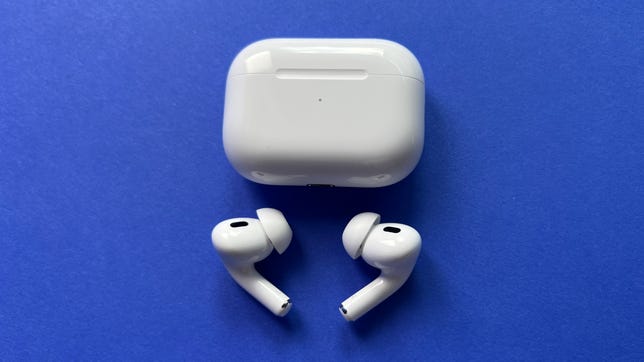Technologies
Apple AirPods Pro 2 Review: The Best Lightweight Earbuds You Can Buy
With better sound, active noise canceling and battery life than their predecessor, the AirPods Pro 2 deliver exceptionally good performance for their size.
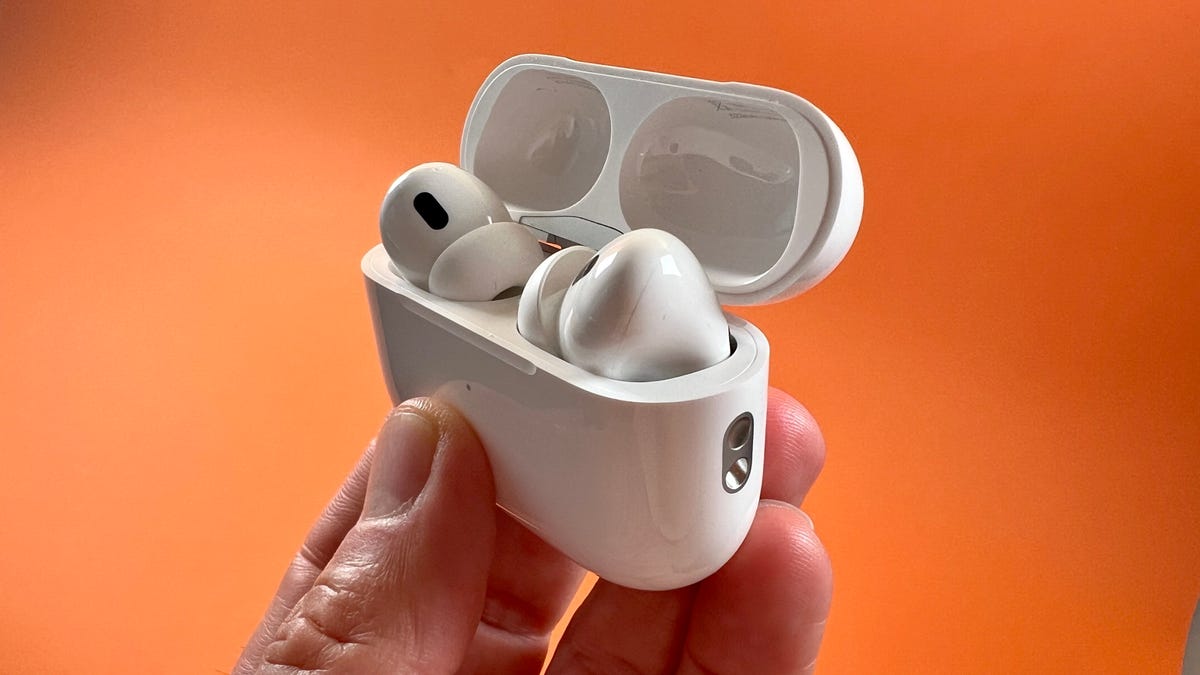
It shouldn’t surprise anyone that Apple’s AirPods Pro 2 ($249, 249, AU$399) are better than the original AirPods Pro. After all, this second-gen version took nearly three years to develop, so you figure Apple could probably pull something together that might give you a reason to upgrade from the first-gen AirPods Pro or buy them over other great premium earbuds from Sony, Bose and other big headphone brands.
The good news is Apple has done just that. And while putting an exact percentage on how much AirPods Pro 2 have improved over their predecessors isn’t so easy (that’s something I’ll try to do in this review), suffice to say they’ve improved enough to earn a CNET Editors’ Choice award, particularly now that they’re being discounted at several online retailers with prices dipping to as low as $200 during flash sales.
Read more: Best Wireless Earbuds for 2022
Like
- Significantly improved sound and noise canceling
- Powered by Apple’s new H2 chip
- Better battery life (6 hours)
- Upgraded microphones
- Charging case has U1 chip and built-in speaker for Find My
- New swipe volume controls
- Adaptive transparency mode
- Spatial Audio
- Extra-small ear tips are now included
Don’t Like
- Basically the same design as previous model
- No high-resolution audio
- No XL ear tips
Product details
- Battery Life Rated up to 6 hours
- Noise Canceling Yes (ANC)
- Multipoint No
- Headphone Type Wireless earbuds
- Water-Resistant Yes (IPX4 — splash-proof)
Apple AirPods Pro 2 design: Small changes
Let’s start with the external design. This is one of those situations where Apple hasn’t really done anything to change the size and shape of the buds or significantly alter their physical appearance. The original AirPods Pro were compact and lightweight and fit a lot of people’s ears really well, so I can’t fault that decision.
Some people were hoping for shorter stems and perhaps some new color options or even better water resistance — yes, they’re still IPX4 splash-proof. But I figured Apple would stick with its tried-and-true design and focus on making improvements to the areas that had the most room for improvement, such as sound quality, noise-canceling performance and battery life, which is now up to six hours from about four-and-a-half hours with noise canceling on and an extra four charges in the charging case (30 hours total). Those numbers go up to seven hours and 35 hours total with the noise canceling off. A quick five-minute charge gives you about an hour’s worth of battery life.
There are some small but noteworthy changes to the design, particularly to the microphones placement. On the original AirPods Pro, the skin-detection sensor and noise-canceling microphone were combined on the inside of the bud. Now, they’re separated with the skin-detection sensor in the same spot, but the noise-canceling microphone has been moved to the top of the bud where it’s exposed to the outside world and better at picking up and processing ambient sound. The microphone configuration is similar to what you see on the AirPods 3, but the skin-detection sensor is smaller, and Apple says it’s improved that sensor so it more accurately turns on and off playback and is more energy efficient.
I should also mention that Apple now includes a fourth set of extra small ear tips, which should help those of you with really small ear canals who had trouble getting a secure fit with the originals.
But this isn’t like the AirPods 3, where Apple made big changes to the earbuds’ external design. As far as I can tell, these fit my ears the same as the originals. I personally would like Apple to include a new extra-large ear tip, but I do get a relatively good seal with the largest size that’s included. (I am able to pass the seal test in the Ear Tip Fit test that’s part of the AirPods Pro’s Ear Tip companion app, but I do have to sometimes adjust how the buds sit in my ears to pass the test.) I could probably do just a little better with an XL tip, and I sometimes use third-party foam tips to get a more secure fit. They have a little more grip, and that helps keep the buds very securely in my ears, particularly when I’m running with them.
Upgraded Apple AirPods Pro 2 wireless charging case
The new MagSafe-enabled wireless charging case is the same size but now has a built-in speaker and Apple’s U1 chip, which allows it to play sounds for use with Apple’s precision Find My feature (the case essentially has an Apple AirTag built into it). Previously, the buds could play a sound through their drivers, but often they were in the case, so you couldn’t hear that sound. Now, you can use Find My to locate the case or the left or right earbuds separately should one or all of them go missing (the buds use Bluetooth Low Energy or BLE for tracking). The case also now has a spot for attaching a lanyard, but sadly, Apple doesn’t include a lanyard with the buds.
It’s worth noting that you can’t charge the original AirPods Pro in the AirPods Pro 2’s cases and vice versa. If you try that, you’ll get a «mismatched AirPods» notification on your phone.
While Apple has retained the pinch controls on the stems, which I preferred to the touch controls on the original AirPods, it’s now added swipe controls on the stem for adjusting the volume. You can still ask Siri to raise and lower volume — these do have hands-free Siri — but a lot of people will appreciate the new swipe controls.
That’s really it as far as external design changes go and most of them are tied into some feature or performance enhancement.
Read more: Best Noise-Canceling True Wireless Earbuds for 2022
New Apple AirPods Pro 2 drivers and internal components
As I said in my initial first look video, the real changes are on the inside, where everything is basically new. The AirPods Pro 2 are powered by Apple’s new H2 chip, which delivers more processing power while being more energy efficient. To get better sound, Apple has combined that chip with a new amplifier and new low-distortion drivers along with new digital processing algorithms. The H2, new microphones and algorithms are also what drive the improved adaptive active noise canceling that Apple says is twice as powerful as its predecessor’s noise canceling. And finally, there’s a new Adaptive Transparency Mode that allows you to hear the world around you in a natural, lifelike manner while reducing loud noises that might normally shock your ears. It’s a great transparency mode and you can turn the adaptive part off if you want.
Apple AirPods Pro 2 sound evaluation
You can definitely hear the improvements to both the noise canceling and sound. As for sound, you get better clarity, more bass punch with better definition, and just more all-around depth and dynamic sound. The sound just has a little more girth and dimensionality. I compared a few tracks I always use during testing, like Spoon’s Knock Knock Knock, and you can really notice a difference in the bass performance. The earbuds use Adaptive EQ, which uses an inward-facing microphone to monitor the sound going into your ears, and the H2 chip, which optimizes the audio that you’re listening to on the fly (there are no manual EQ settings). The chip’s increased computational power helps it process and optimize a wider range of frequencies, particularly the highs.
One of the more impressive things about the buds is how loud they play. For me, I found they played plenty loud at about 65% to 70% volume. I compared them to the new Bose QuietComfort Earbuds 2. The AirPods Pro 2 sound excellent, but there’s something about the tonal balance of the Bose that I liked a little better at times — there’s a bit more warmth and naturalness to it — and the bass has a bit more oomph. But I had to push the volume up to about 85% to hear some of the finer details and to get the extra bass kick on the Bose. With the AirPods Pro 2 you hear more detail and get good bass even at more moderate volumes.
Some people were hoping that the new AirPods Pro would be able to stream Apple Lossless tracks over wireless. They currently can’t do that, which will certainly disappoint some people. Whether they’ll be able to do that in the future and possibly get other new feature upgrades is anybody’s guess. But for now, they use Bluetooth 5.3 and support the AAC LC3 audio codec, which offers 16-bit 48 kilohertz bit rates compared with the 16-bit 24 kilohertz bit rates of AAC. Not high-resolution audio, but a little bump up.
Samsung’s Galaxy Buds 2 Pro support 24-bit high-resolution audio. The catch is to get that 24-bit audio you need a Galaxy device equipped with Samsung’s One UI 4.0 and a music streaming service like Qobuz, Tidal or Amazon Music that streams high-res audio tracks. On all other devices, including Android phones and iPhones, those buds default to the AAC audio codec.
Apple AirPods Pro 2 noise canceling testing
The active noise canceling is impacted by how tight a seal you get from the ear tips. If you lose that tight seal, some ambient sound may leak in and you may hit the rare ANC hiccup as the AI shifts gears for a fraction of second to make adjustments (this is a phenomenon with all adaptive noise-canceling earbuds). But it was easy to sense that the noise canceling was reducing more cabin noise during a cross-country flight I took and also muffled more sound when I rode the subway in New York. The buds also have just enough venting to avoid that oppressive occluded feeling you sometimes get with ANC buds.
The noise canceling didn’t feel twice as strong to me as I switched between the AirPods Pro 2 and the original AirPods Pro, but by double the noise canceling power what Apple means is that noise canceling is improved across all frequencies and probably more so with high- and mid-range frequencies that are harder to muffle than lower frequencies. So you’re likely to hear more improvement with the muffling of people’s voices, for example.
Ultimately, the noise canceling is one of the best out there right now and just a slight step behind what I experienced with Bose’s new QuietComfort Earbuds 2, which arguably have the best noise canceling at this moment. But I’ll say it again, the noise-canceling experience can and will vary with the fit of the earbuds, so hopefully, you get a good fit.
If you happen to own an Apple Watch, you can fire up the Noise app — or complication, as Apple calls it — to get a readout of the exact decibel levels the AirPods Pro 2 are reducing with their noise canceling (you just need to have a Watch running WatchOS 9). It’d be nice if you could just see that same dB level check on your iPhone.
Apple AirPods Pro 2 Spatial Audio
I’m not going to talk too much about Apple’s Spatial Audio virtual surround mode, but it’s here and fun to play around with — it’s a nice bonus feature, and Apple seems to do it best compared with other buds that have their own virtual surround or spatial mode with head-tracking (for example, Samsung’s Galaxy Buds 2 Pro use 360 Audio). I prefer using Spatial Audio with movies, but I also tried it with various music tracks, particularly those that Apple designates as Made For Spatial Audio. It doesn’t necessarily make music sound better, but it does make it sound different, and it’s interesting to try it out with tracks you know well and want to hear in a different way.
iOS 16 brings Personalized Spatial audio to any AirPods that support Spatial Audio. Similar to what you do when setting up Face ID, the personalized experience comes from taking pictures of your ears, and the biggest benefit is the more accurate placement of dialogue directly in front of you when you’re watching a movie. That placement doesn’t move even if you turn your head if you have head-tracking turned on (you can also use Spatial Audio in «fixed» setting).
Apple AirPods Pro 2 voice-calling performance
The original AirPods Pro were mostly excellent for making voice calls and these are even slightly better. As I said, the microphones have been upgraded, and there are two beamforming microphones for calls — one on the outside of the bud and one at the bottom of the stem, both of which have some mesh covering them to help reduce wind noise. When you’re using the buds to make a FaceTime call over Wi-Fi instead of a call over a cellular voice network where the audio gets compressed, people may be able to notice a bigger difference in the clarity of your voice compared with what they would hear with the original AirPods Pro. (You can listen to a test call on the Verizon cellular network in my companion video review, at the top of this page.)
The one thing I noticed when comparing the AirPods Pro 2’s voice calling with that of the Bose QuietComfort Earbuds 2 is that when you’re having a conversation, the AirPods Pro 2 let more background noise in, but your voice sounds clearer to callers. When you’re not talking, the Bose earbuds completely silence the background noise — it only bleeds in a bit when you start talking. The AirPods Pro 2 don’t try to silence the background noise; they just reduce it to lower levels. There’s something quite impressive about the Bose almost completely silencing the background noise, but the overall experience for callers (the people you’re talking to) seems to be better with the AirPods Pro 2, because your voice does sound clearer and they can hear you well over the reduced background noise.
I made calls with noise canceling on as well calls with the adaptive transparency on. People you’re talking with can’t hear a difference, but there will be a big difference on your end, particularly if you’re in a noisy environment, where you’ll want to turn the noise canceling on (there’s just enough sidetone to hear your voice in the buds with noise canceling on). In less noisy environments, it’s better to turn transparency on because you can hear your voice as it sounds and you won’t talk too loud. And the transparency does make you feel as if you’re not wearing headphones, though you may still feel them in your ears.
You can use one bud independently — with noise canceling on if you want — and leave the other in the case to charge. It doesn’t matter which one you use when making calls; with the Bose QuietComfort Earbuds it appears that you can only use the right bud for calls if you want to use only a single bud.
Apple AirPods Pro 2 buried features
I’ve spent most of this review focusing on the AirPods Pro 2’s top-level features and the things that people care about most, such as sound quality, noise-canceling and voice-calling performance. But the AirPods Pro do have a number of extra features and settings buried within iOS 16 under the Accessibility setting that allow you to tweak the buds, play masking sounds and even create a custom audiogram. And for those who have slight to moderate hearing loss, there’s a Conversation Boost that turn the buds into hearing amplifiers.
These features aren’t unique to the AirPods Pro 2 — they’re available for all the latest AirPods. But they’re worth exploring, and I suspect we’ll see more features added in the future. For instance, there was some chatter about new health features coming to the AirPods Pro 2. Those haven’t materialized, but you never know what could get added. For example, Spatial Audio didn’t come to the AirPods Pro until well after their initial release, and Apple never even hinted at when it originally launched the headphones.
Another nice little bonus: In addition to charging via Lightning, MagSafe or standard Qi wireless pads, the AirPods Pro 2 can even be juiced up with an Apple Watch magnetic charger.
Apple AirPods Pro 2 compared to other top earbuds
As I said at the beginning, it’s hard to put an exact number on just how much better the new AirPods Pro 2 are than their predecessor. But I’m going to go with somewhere around 40%.
The fact is that when the AirPods Pro came out almost three years ago, it was really their compact size, comfortable fit and Apple-only features like auto switching between all the devices on your iCloud account that were their big selling points. That’s all here still, but now the sound and noise canceling, which were good but not great before, are what you’d expect from a $249 set of buds.
Audio quality is subjective, and some people may slightly prefer the sonic traits of buds like the Bose I mentioned earlier or the Sony WF-1000XM4 or Sennheiser Momentum True Wireless 3, all of which have equalizer options in their companion apps. But others may actually prefer the AirPods Pro 2’s sound; it really does stack up well against what you get with other premium earbuds in this price range.
Final take on Apple AirPods Pro 2
While the AirPods Pro 2 will pair with Android devices, you do lose a lot of their special features, including Spatial Audio, so Android users are better off with buds like Google’s very good Pixel Buds Pro, Samsung’s excellent Galaxy Buds 2 Pro or the Bose QuietComfort Earbuds 2 that I mentioned earlier. And you may find that other buds like the Bose or even Apple’s own Beats Fit Pro, which don’t sound quite as good or offer as good noise canceling or voice calling performance, may fit your ears more securely, which is an important factor when buying wireless earbuds.
I’m among those who wish Apple had made the AirPods Pro 2 look a little different than the originals. (I really do want them to come in more color options.) But if you’re an Apple user, they’re hard to beat so long as they fit your ears. While they may not quite be perfect, they feel like a much more fully evolved, refined product that packs not only an impressive set of features but top-notch performance in a very small design.
Editors’ note: This review was originally published on Sept. 22, 2022 and updated in December to reaffirm our continued positive experience with the headphones and add an Editors’ Choice designation.
Technologies
Sora and Google’s Nano Banana Pro Are Slammed, and Scale Back Free Videos and Images
OpenAI and Google are reducing the number of image or video requests you can make on their latest media-generation platforms.
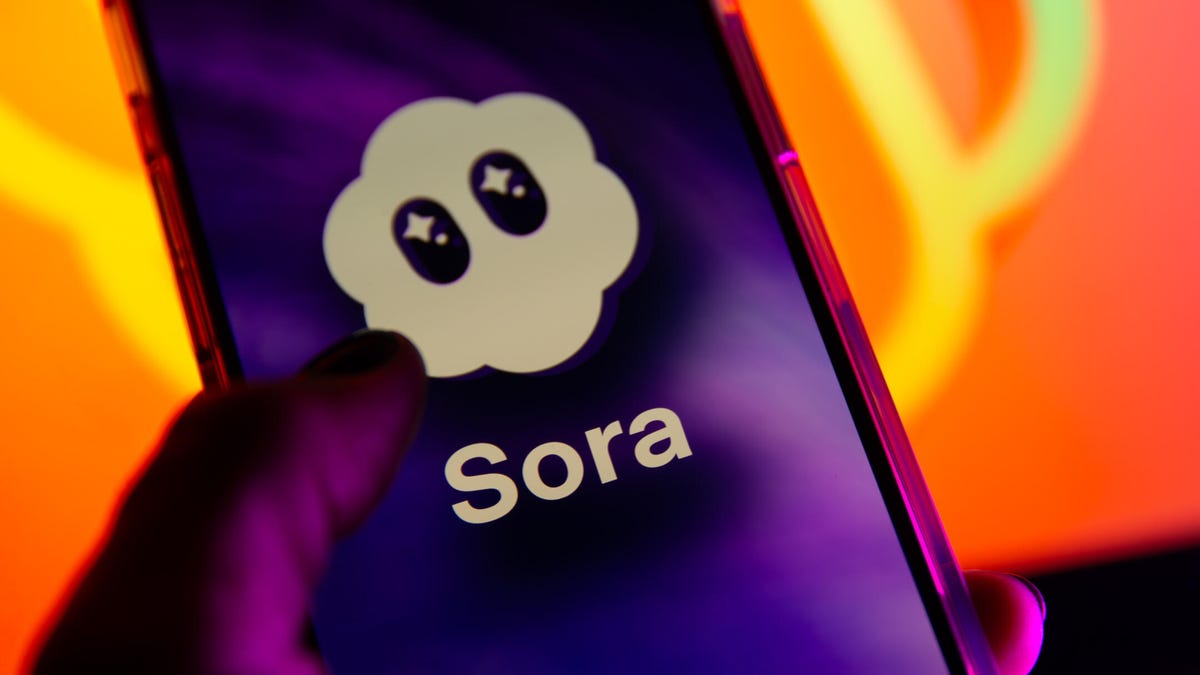
Maybe it’s because of the holiday weekend.
OpenAI’s video generator Sora and Google’s image generator nano banana pro are placing new limits on how many videos (in the case of Sora) and AI images (in the case of nano banana pro) you can make per day.
With more people using their Thanksgiving weekend idle time to, say, make AI videos of cats as angry service industry cashiers, it’s likely these services are hitting their limits.
Bill Peebles, OpenAI’s head of Sora, posted on X, «our gpus are melting, and we want to let as many people access sora as possible!» GPUs are the graphics processing units used by AI services for the complex computations they need to perform.
Peebles wrote that Sora will limit free video generation to six videos per day. ChatGPT Plus and Pro accounts won’t see any changes.
«And everybody can purchase additional gens as needed,» he wrote.
Don’t miss any of our unbiased tech content and lab-based reviews. Add CNET as a preferred Google source.
Gemini limits
As for Google’s image generator, a Gemini support page says that those without a Google AI plan are now limited to two images generated and edited per day with nano banana pro. The previous limit was three, according to 9to5Google, which also spotted new usage limits on Gemini 3 Pro that are variable. The same support page says free access to Gemini 3 Pro Thinking includes «Basic access — daily limits may change frequently.»
The limit for nano banana (the previous 2.5 non-pro version) is 100 free images per day.
A representative for Google did not immediately respond to a request for comment.
(Disclosure: Ziff Davis, CNET’s parent company, in April filed a lawsuit against OpenAI, alleging it infringed Ziff Davis copyrights in training and operating its AI systems.)
Technologies
If You Don’t Want to Pay AirPod Prices, I Found Great Noise Canceling Earbuds That Are Only $53 for Black Friday
You don’t need to spend a fortune to get a great pair of earbuds.
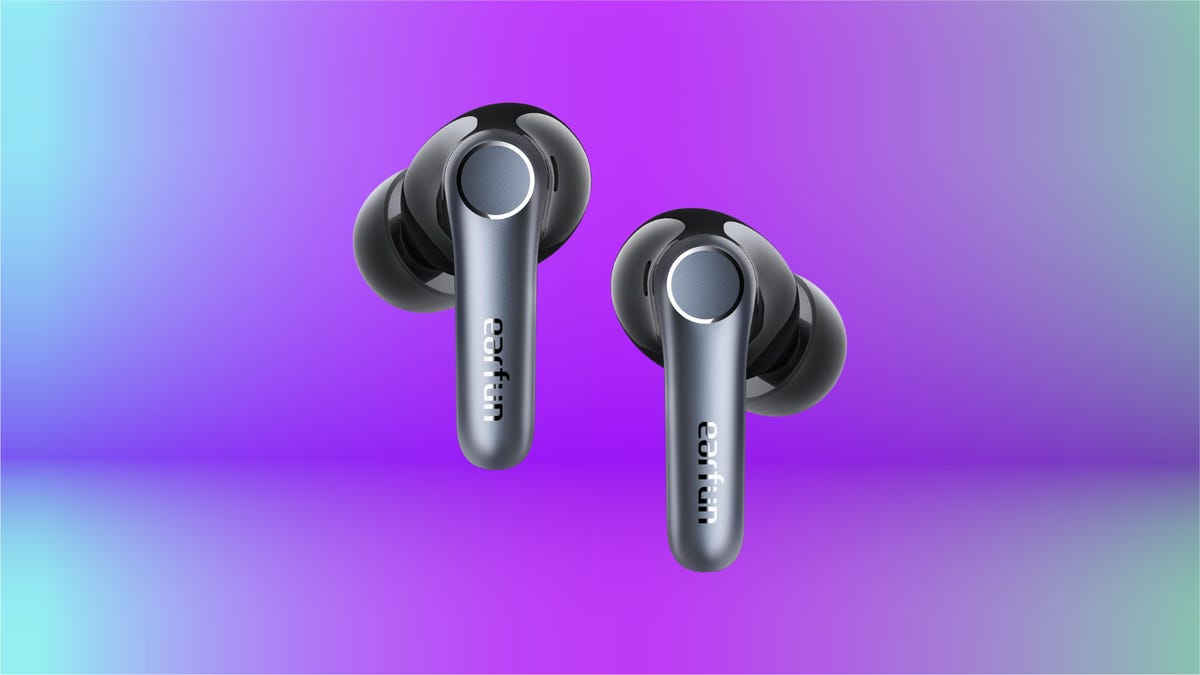
Black Friday deal alert: If you’re looking for a new pair of noise-canceling earbuds, there are some good deals on Apple AirPods right now, but you might be able to spend half as much to get similar performance. I’ve found that the Air Pro 4 earbuds from Earfun are legitimate contenders to the AirPods, at a much lower price. Right now at Amazon for Black Friday, you can get the Air Pro 4s for a steal — they’re 34% off, which drops their price down to $53.
In short, they’re great, and the black ones are currently available on Amazon for $53, near the lowest price we’ve ever seen them sell for. The other colors are also on sale; the glossy white and royal blue are both $68.
Hey, did you know? CNET Deals texts are free, easy and save you money.
HEADPHONE DEALS OF THE WEEK
-
$248 (save $152)
-
$170 (save $181)
-
$199 (save $150)
How these earbuds silence the noise around you
I prefer in-ear headphones because they offer active, electronic and passive noise cancellation. Passive noise cancellation basically consists of plugging your ears with the rubbery tips included with the earbuds.
The Earfuns fit well for me when I use the second-largest of the five swappable ear tip sizes, and they stay sealed and comfortable for hours. Sometimes I have to reseal one after I yawn or something, but that’s the case with other in-ear headphones, too.
For reading, I prefer Earfun’s «Strong ANC» noise-canceling mode, which makes a big difference when blocking out the noise around you, but there are a bunch of other noise-cancellation options. The Ambient Sound function is good for when I want to pay attention to my surroundings.
Overall, I found the app easier to use than Sony’s and just as capable. The main difference is that Sony’s app has a variable slider for ambient sound.
The Earfun app also includes a white noise section in the app. Normally, I prefer Spotify for white noise (and I download my favorite playlists for offline listening) but this feature is useful for people who don’t have another music service. It includes birdsong, waves and rainfall, all of which are short clips that repeat automatically.
Why I chose these earbuds over AirPods
These headphones have every other feature I’d expect, including the ability to connect to two devices simultaneously and programmable touch-sensitive controls on the buds. Plus, battery life has been more than ample for me, even after a marathon reading session.
There’s also a finder function if you misplace either earbud (unlike Apple FindMy, however, they have to be connected and in Bluetooth range). For actual music and voice calling quality, they sound fine, albeit not as good as my big Sonys.
I have an iPhone and briefly thought about buying Apple AirPods, but I didn’t want to spend the money. The AirPods 4 with noise cancellation cost $115 more than these Earfuns and have an open-ear design, so they rely entirely on the electronic (not passive) method. The AirPods Pro 2 are in-ear and superb, but I didn’t want to spend $250 on a pair of secondary headphones.
Yes, I could probably save some money on an even less expensive pair of in-ear noise-cancelling headphones, but I’m not sure I’d be as happy with their fit, long-term comfort, battery life and noise-cancellation performance. The Earfun Pro 4 buds help me relax and concentrate on my book, and for me that’s priceless.
For more headphone savings, check out our roundup of all the best deals on headphones, or find bargains of all kinds in our roundup of the best Amazon Prime Day deals going on now.
Join Our Daily Deals Text Group!
Get hand-picked deals from CNET shopping experts straight to your phone.
By signing up, you confirm you are 16+ and agree to receive recurring marketing messages at the phone number provided. Consent is not a condition of purchase. Reply STOP to unsubscribe. Msg & data rates may apply. View our Privacy Policy and Terms of Use.
Technologies
I Have a Flashlight Fetish and My Favorite New Olight Is 20% Off for Black Friday
Olight’s sleek new pocket flashlight, the ArkPro, is normally $100. But it’s down to $80 for Black Friday and Cyber Monday.
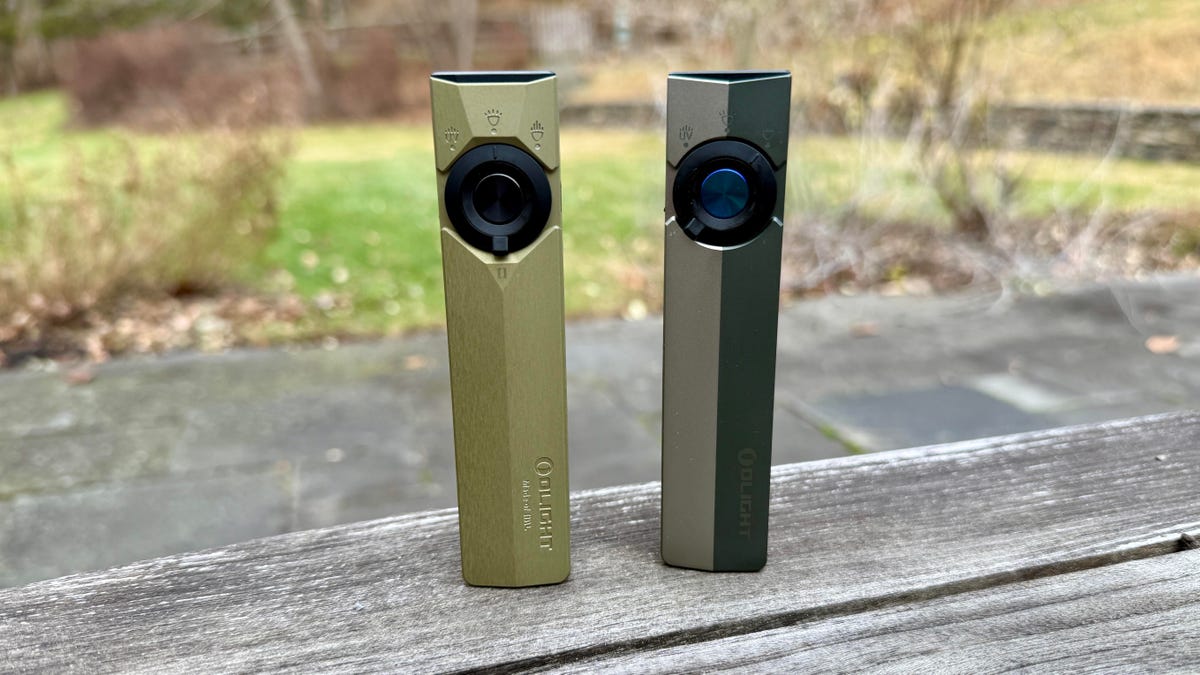
Truth be told be told, I have a thing for flashlights. Not a bad thing, just a certain appreciation for a well-designed torch, as the Brits might say.
Bright flashlights are good, naturally, but a small, sleekly designed rechargeable everyday carry flashlight that puts out a decent amount of light is high on my list of flashlight favorites, and the new Olight ArkPro and its slightly brighter sibling, the ArkPro Ultra, fit the bill. They’re both on sale for Black Friday and Cyber Monday for 20% off. The ArkPro is down to $80 ($100 list) while the ArkPro Ultra’s price has dipped to $104 ($130 list).
The flashlights are upgraded versions of Olight’s Arkfeld Pro ($70) and Arkfeld Ultra ($84), with higher brightness ratings. Both new models have similar flat, IPX7 waterproof designs with sturdy metal bodies and a magnetic base that allows you to attach the flashlight to anything metal. There’s also an integrated clip-on mount, and they come in cool white and neutral white color temperature versions.
You get three lighting modes: a 1,500-lumen floodlight mode (1,700 lumens for the ArkPro Ultra), an 800-lumen, 205-meter reach spotlight mode (it’s the same for the Ultra) and a UV light mode. You can also activate a green beam laser pointer.
The flashlights come with a wireless charger that magnetically attaches to the base, but you can also charge them via USB-C, which I found more convenient.
I mainly tested the flashlights while walking my dog at night in a pretty remote rural area in New York. The floodlight mode works better for dog walking, but I’d sometimes switch to spotlight mode when I wanted to gauge what was further ahead of us or check whether anything was lurking in the trees or bushes.
These smaller EDC flashlights are well-suited to a variety of activities, including camping and anything you’re doing where you’d like to have a flashlight handy that you can easily carry around in a pocket. You can find similar flat flashlight designs from other brands on Amazon — some of them for significantly less money. However, Olight is considered a premium EDC flashlight brand, though some flashlight enthusiasts are less enthusiastic about the brand for a few reasons. That said, I’m just fine recommending these new ArkPro models when they’re discounted like this. And they do make for nice gifts this time of year.
Join Our Daily Deals Text Group!
Get hand-picked deals from CNET shopping experts straight to your phone.
By signing up, you confirm you are 16+ and agree to receive recurring marketing messages at the phone number provided. Consent is not a condition of purchase. Reply STOP to unsubscribe. Msg & data rates may apply. View our Privacy Policy and Terms of Use.
-

 Technologies3 года ago
Technologies3 года agoTech Companies Need to Be Held Accountable for Security, Experts Say
-

 Technologies3 года ago
Technologies3 года agoBest Handheld Game Console in 2023
-

 Technologies3 года ago
Technologies3 года agoTighten Up Your VR Game With the Best Head Straps for Quest 2
-

 Technologies4 года ago
Technologies4 года agoBlack Friday 2021: The best deals on TVs, headphones, kitchenware, and more
-

 Technologies4 года ago
Technologies4 года agoVerum, Wickr and Threema: next generation secured messengers
-

 Technologies4 года ago
Technologies4 года agoGoogle to require vaccinations as Silicon Valley rethinks return-to-office policies
-

 Technologies4 года ago
Technologies4 года agoOlivia Harlan Dekker for Verum Messenger
-

 Technologies4 года ago
Technologies4 года agoiPhone 13 event: How to watch Apple’s big announcement tomorrow

